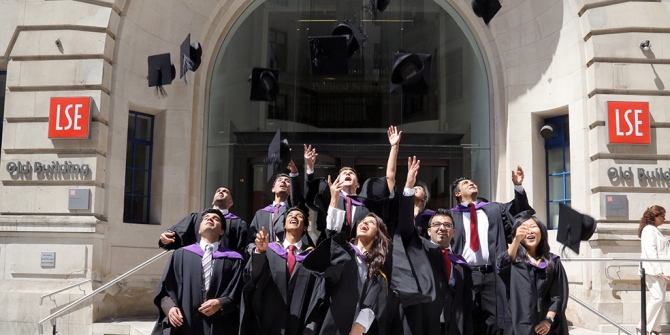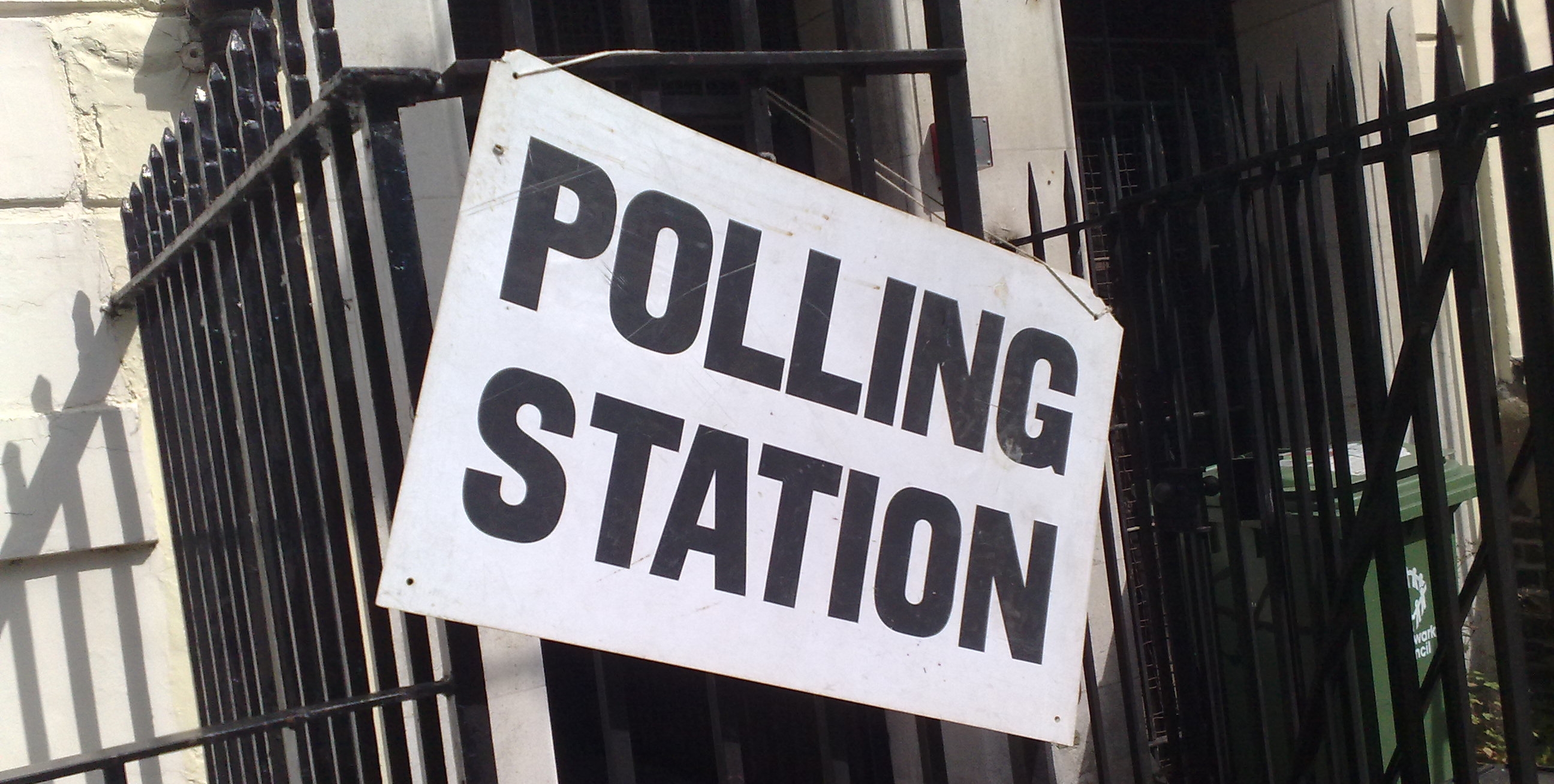 Throughout the short campaign, this blog will be publishing a series of posts that focus on each of the electoral regions in the UK. In this post, Cherry Miller discusses the key things to look out for in the West Midlands.
Throughout the short campaign, this blog will be publishing a series of posts that focus on each of the electoral regions in the UK. In this post, Cherry Miller discusses the key things to look out for in the West Midlands.
It would seem churlish for any contributor in this series not to stake a claim for their region as the bellwether region of the UK. In the 2010 General Election, the West Midlands played a pivotal role in denying the outgoing Labour government a majority and there are at least 10 ‘marginal’ seats up for grabs this time around. The region is dominated by a two way pull between Conservatives and Labour and in 2010 there was an above average negative swing towards the Conservatives who now hold the majority of seats in the region. The West Midlands region includes Birmingham, Coventry, Herefordshire, Shropshire, Staffordshire and Warwickshire. The West Midlands does not resemble fertile territory for the Liberal Democrats who will largely be leading defensive campaigns in Birmingham Yardley and Solihull. There are 59 parliamentary constituencies in the West Midlands. Currently the Conservatives hold 33, Labour 24, and the Liberal Democrats hold 2. For the first time, the Green Party will contest all seats in the 2015 Election.
Issues
Public Services- The attribution of political responsibility for the pressure on public services by councils responding to financial challenge will be contingent upon voting intentions. An illustrative example is Birmingham City Council who has reduced opening hours at the Library of Birmingham and has introduced an unpopular annual charge for the collection of garden waste. Policing is also a significant local issue in the West Midlands and the Labour Party announced an £800m pledge to protect police numbers nationally and to abolish PCCs. The region is also home to Stafford hospital and the NHS will feature in party campaigns across the political divide. Welfare changes such as the removal of the spare room subsidy has generated much controversy in the region.
Jobs, Skills and Growth- The region has the second highest rate of unemployment in the country which comprises 6.5 per cent of the economically active population[1] and the third highest number of young people not in employment, education or training[2]. The region has a large manufacturing base that comprises a sizeable 11.3 per cent proportion of total employment[3]. The Conservatives will seek to retain a narrative on the economy, especially in the more prosperous rural constituencies and will push their record on apprenticeship creation. Immigration and wages at the lower end of the labour market will be a big issue in some constituencies. HS2 has divided opinion in the region. Some have been concerned about being on the route and the costs, whilst land has recently been freed up after protest from MPs at Washwood Heath to create more jobs than had been originally promised under the HS2 depot.
Devolution- Both national parties have been making overtures to the region about devolution such as Lord Heseltine speaking to the Birmingham Post. However, this would require a combined authority and Solihull and Coventry are currently reticent. Ed Miliband and Ed Balls have suggested that they would devolve £30 billion centralised spending to the regions and would have 9 regional ministries.
Battlegrounds
Conservatives
Birmingham Northfield (2,782) Numerical ordering would put leafy Birmingham Edgbaston (majority 1,274) before Birmingham Northfield (2,782) in terms of marginal seats. Yet a leaked non-target list from CCHQ suggests that this is not a target seat. However, the veracity of this list may be questionable because of the inclusion of seats such as Cannock Chase and Dudley South. Nevertheless, Edgbaston constituency has the independently minded constituency MP Gisela Stuart who has a strong personal following and has a history of defying national swings.
Instead the Conservative Party are channelling central resources into Birmingham Northfield, a largely white working class constituency and part of their 40/40 campaign. The seat has shown resilience in the closure of MG Rover at Longbridge in 2005. The campaign being fought by Labour is based upon Richard Burden’s track record as a locally focused MP and the work in supporting many Rover workers back into employment and training. Electoral calculus gives Labour a 78 per cent chance of victory. It will be interesting to see where the 6550 Lib Dem votes go, if anywhere.
Newcastle- Under- Lyme (Lab 1552) This seat has been Labour since 1922 when Josiah Wedgwood joined the party but Paul Farrelly’s majority in 2010 was significantly reduced when UKIP picked up 8 per cent of the share of the vote and the Conservatives increased their share by 9.4 per cent. The Conservative PPC Farrelly is against Tony Cox, a local engineer. Electoral Calculus suggests a 71 per cent chance of Labour holding the seat.
Solihull (Lib Dem 175) Liberal Democrat Lorely Burt is familiar with fighting slim majorities after winning Solihull from the Tories after 60 years of rule in 2005 with a 279 majority. The seat is affluent and is home to Jaguar Land Rover. It has the highest rates of owner-occupier in the country and has a well above average turnout (70.8 per cent). The Green PPC is a defector from the Lib Dems. The Greens have won seats on Solihull council and are the second largest party. Electoral Calculus predicts a 71 per cent chance of a Conservative gain and 15 per cent Lib Dem hold.
Telford (Lab 981) David Wright (Lab) has been the MP since 2001 and will face PPC Lucy Allan. The seat has been receiving regular visits from senior Conservatives who seem to be buoyant about the win and it remains the only Labour stronghold in the county. There is a growing IT sector in the constituency and major employers include CapGemini, EDS and Fujitsu. Electoral calculus predicts a Labour hold with 42 per cent of the vote. Lord Ashcroft predicts a Labour hold with a 7 per cent swing from Conservative to Labour.
Walsall North (Lab 990) David Winnick, MP since 1979, will be defending the seat against Douglas Hansen-Luke (Con). Electoral calculus predicts a safe Labour win with 40.7 per cent of the vote. Lord Ashcroft’s poll from May 2014 (at the time of the European and Local elections), showed that Labour had 37 per cent support from respondents and UKIP had 30 per cent.
Labour
Birmingham Yardley (Lib Dem 3002) John Hemming who replaced Estelle Morris as MP in 2005 will face PPC Councillor Jess Phillips (Lab). Lord Ashcroft’s poll from November 2014 suggests that the gap is closing between Phillips and Hemming and Electoral Calculus predicts a Labour victory. Phillips’ campaign has great momentum. She has been animating local students with enviable energy but the wards of Acocks Green, Sheldon, Stetchford and North Yardley and South Yardley wards still have considerable Lib Dem support and so Hemming who has an incumbency advantage may just edge ahead.
Cannock Chase (Con 3195) Created in 1997, Cannock Chase constituency is Tony Wright’s old stomping ground. The seat went Conservative in 2010 with a 14 per cent swing, the highest pro-Conservative swing in the country. Outgoing MP Aiden Burley is stepping down after organising a controversial Nazi stag-party and left the constituency with a contentious valedictory speech. Electoral Calculus predicts a Labour gain with a 50 per cent chance but Matthew Goodwin and Robert Ford have placed Cannock Chase in the top ten UKIP friendly seats. UKIP are the main opposition on Cannock Chase Council. Deputy UKIP Leader Paul Nuttall suggested that UKIP would be going ‘hell for leather’ for the seat. Lord Ashcroft’s poll from October 2014 suggest 32 per cent and 30 per cent for Labour and UKIP respectfully.
Dudley South (Con 3856) Chris Kelly (Con) a former researcher for Michael Howard, is stepping down and local councillor Mike Wood is standing in to defend a Conservative majority. UKIP may split the Conservative vote since received more than 8 per cent of the share of the vote in 2010. Electoral calculus whose forecasts has been quite favourable to Labour, predicts a Conservative hold with 38.1 per cent of the vote compared to Labour’s predicted 35.7 per cent share.
Halesowen and Rowley Regis (Con 2023) James Morris (Con) is up against Stephanie Peacock (Lab). This seat will be won on a knife edge by either party. Lord Ashcroft’s poll for March 2015 suggests Labour 39 per cent support and Conservatives 37 per cent support. Electoral calculus predicts a labour gain only with a 55 per cent chance though.
North Warwickshire (Con 54) North Warwickshire is Labour’s top target seat in the region.The Conservatives are defending a paper thin majority, the smallest majority in Britain in a seat that was Frances Maude’s in the 1980s. The outgoing MP, Dan Byles is stepping down so the Conservatives will lose an incumbent advantage. Mike O’Brian (Lab MP from 1992-2010) is standing again against Craig Tracey (Con) and William Cash (UKIP), the son of Eurosceptic Conservative MP Bill Cash. Electoral calculus predicts a Labour gain with 64 per cent chance of winning. Lord Ashcroft’s poll suggests that Labour have a comfortable 41 per cent support but UKIP’s support has increased to 22%.
Nuneaton (Con 2069) Marcus Jones (Con) faces Vicky Fowler (Lab). Electoral calculus predicts a Labour gain with 40 per cent of the vote to the Conservatives’ 36.4 per cent. Lord Ashcroft’s poll from March 2015 finds a 5 per cent swing from Conservatives to Labour.
Warwick and Leamington (Con 3856) Victory in Warwick and Leamington comprised a ‘Portillo moment’ by Labour in 1997 ending 67 years of Conservative hold. Electoral calculus predicts a Labour win, whereas Lord Ashcroft predicts a moderate Conservative win against Labour PPC Lynette Kelly.
Wolverhampton South West (Con 691) Paul Uppal, defending the same majority as Enoch Powell’s in 1950 faces the previous Labour MP Rob Marris. The inner city wards of Wolverhampton South West favour Labour, and the Conservatives rely on their core vote in Tettenal, Wittick and Tettenal Regis. Electoral calculus predicts a Labour win with 63 per cent chance.
Worcester (Con 2982) This seat has huge resonance for Labour. It has graced British politics with the awkward essentialism of the ‘Worcester woman’. Labour had never represented the seat until 1997. Electoral calculus predicts a Labour gain, but Lord Ashcroft’s poll from March 2015 suggests that the Conservatives may hold the seat.
UKIP
Dudley North (Lab 649) The seat was created in 1997 and has always been Labour but in 2010 Ian Austin held a reduced majority with UKIP polling 9 per cent of the vote. Unemployment is significantly above national average in this constituency. Austin faces Bill Etheridge the local MEP. Austin is widely respected and has been shoring up his vote by being vocal about concerns about the EU in Parliament. Lord Ashcroft’s poll puts Labour and UKIP almost neck and neck with 37 and 34 respectively but an Election calculus poll puts Labour with 67 per cent chance of winning. This was a seat central to the Conservative’s 40/40 campaign until Conservative PPC Afzal Amin became embroiled in controversial discussion with the EDL.
Conclusions
The Labour Party is leading a more offensive campaign in this region. Electoral calculus polling has produced favourable outcomes for Labour and if such polling stands, they are set to regain North Warwickshire, Halesowen and Rowley Regis and Wolverhampton South West amongst other seats, but Labour will have to work hard to defend precarious majorities in their own seats. Furthermore, to bear fruit nationally I agree with Waller[4], that, Labour will need to extend a broader appeal beyond the Birmingham conurbation to non-traditional seats such as Worcester and Warwick and Leamington: game-changers that sent a Labour government in 1997 but went Conservative in 2010.
Labour should heed the message from the local election results in 2014 that indicated that UKIP were not just a threat to the Conservatives. The May 2014 European Election results increased the UKIP MEPs in the region from 2/7 in 2009 to 3/7 and received 31.49 per cent of the vote. It is uncertain how far the UKIP momentum will keep going and whether their buoyancy in the locals was because they coincided with the European elections. My hunch is that the West Midlands could be Labour’s fight for the taking but it will be an incredible uphill struggle.
Notes:
[1] Harari, D Unemployment: Regional, House of Commons Library Standard note: SN02798 18th March 2015
[2] Mirza-Davies J NEET: Young People Not in Education, Employment or Training, House of Commons Library Standard note: SN/EP/06705, 26th February 2015
[3]Rhodes, C Manufacturing: Statistics and Policy, House of Commons Library Standard note: SN/EP/1942, 13th Nov 2014
[4] Waller, R (2015): ‘The West Midlands Region’ in Dale I, Callus G, Hamilton D and R Waller (eds), The Politicos Guide to the 2015 General Election, London: Biteback Publishing
Electoral Calculus predictions correct as of 11th April 2015
 Cherry Miller is a PhD student in the Department of Political Science and International Studies at the University of Birmingham. Her research looks into the performance of gender in the UK Parliament. Her Twitter handle is @cherrymmiller.
Cherry Miller is a PhD student in the Department of Political Science and International Studies at the University of Birmingham. Her research looks into the performance of gender in the UK Parliament. Her Twitter handle is @cherrymmiller.









Thanks Tim!
The smallest majority in (mainland) Britain is not North Warwickshire, but Hampstead and Kilburn, which Glenda Jackson held for Labour in 2010 by 42 votes.
http://www.electoralcalculus.co.uk/cgi-bin/seatdetails.pl?seat=Hampstead%20and%20Kilburn